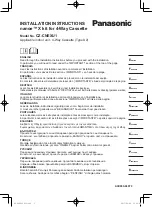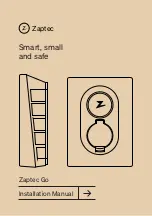
Zonda Drive-away Awning instructions
Thank you for buying a Wild Country Zonda Drive Away Awning and we hope you have fun using it.
Please read these instructions carefully before you pitch your Awning for the first time and keep
them in a safe place for future reference. If used correctly and with care your Awning should give
you years of trouble free use. Top Tip - We would recommend that you take out insurance against
storm and accidental damage as these are not covered by the guarantee.
The first time you use the Awning
If possible we would recommend that you do a practice pitch before heading off on your camper van
holiday for the first time. This will give you the opportunity to learn the best way to pitch and then
pack away your awning and also check that all the component parts are there. Top Tip – don’t forget
to take the pegs and pump with you!
Please also consider the weather conditions before using the awning. This awning is designed to be
used in moderate wind and weather conditions so either do not pitch the awning or take it down in
strong winds or adverse weather such as hail or snowfall. Please note this awning is not designed for
or guaranteed for long term, static or commercial use.
Condensation and ventilation – what you need to know before you go
Your awning is constructed using an impermeable waterproof PU coated outer fabric that has
factory taped waterproof seams. It also has various vents and mesh panels that aid air circulation
and these should be kept clear and left open for maximum effect. However in many conditions and
especially if there is little wind then condensation will be noticeable inside the awning. This can
actually run or drip down onto the groundsheet and can create pools of water. This is not due to
leakage through the fabric or seams but simply from the warm moist air inside the awning (caused
by the occupants) condensing against the cooler impermeable waterproof coating of the outer
fabric. Top Tip - The condensation can be quite extreme at times so we would recommend taking a
quick drying absorbent cloth to mop up any excess water.
Where to pitch
If possible find a level area and ideally one that is protected from the wind. Keep in mind that it is
best to face the door away from the prevailing wind direction so park your camper van so that it is
side on to the wind with the side door facing away from the wind. Avoid pitching under trees
because tree sap is extremely sticky and difficult to clean off and even a small falling branch can
damage your tent. Clear the chosen area of any lose objects and pay particular attention to remove
anything sharp to prevent damage to the built in groundsheet.





























